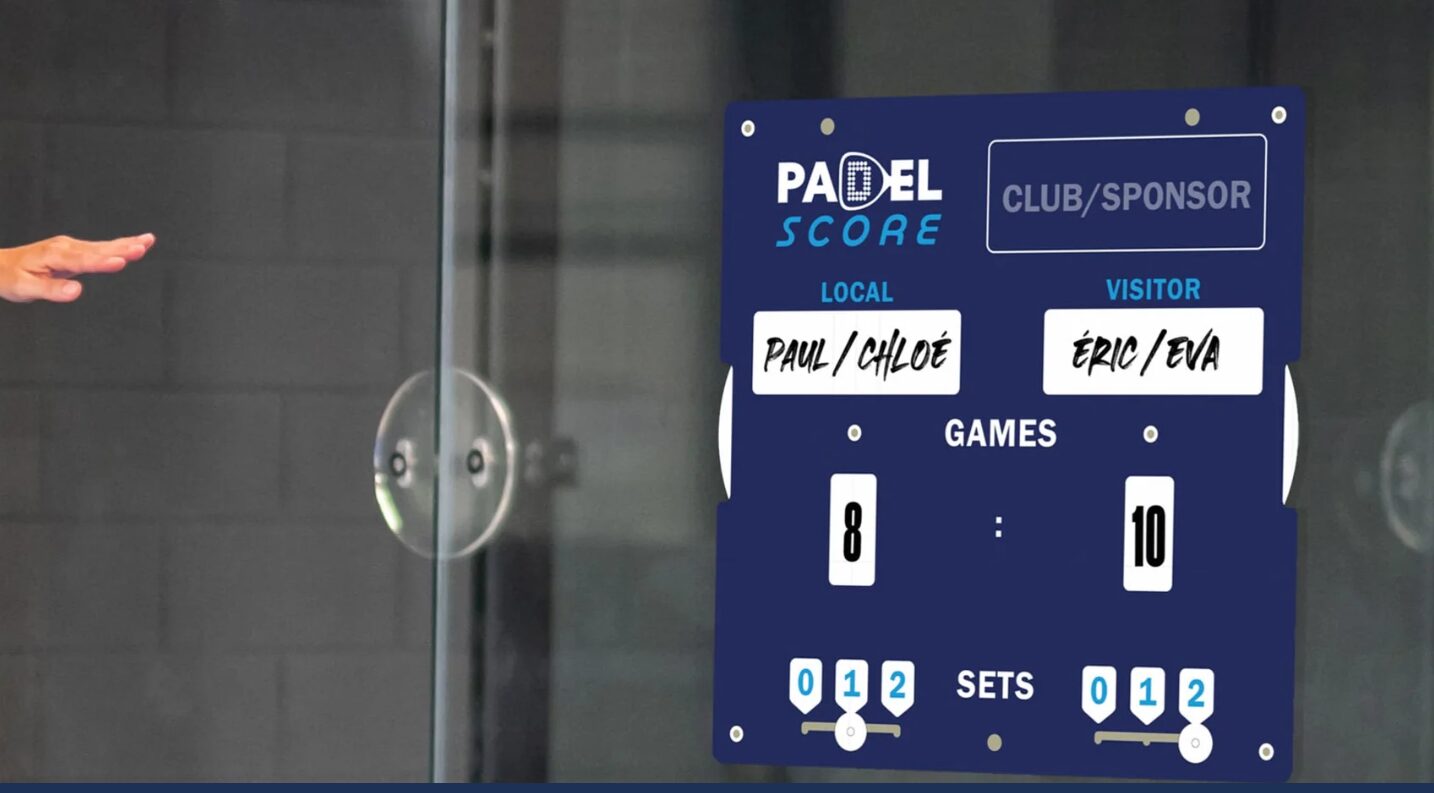Let's take what the champions do and adapt it to our level of amateur player. A tactic that will save you from often uncomfortable situations.
Here is the situation. A situation that must have certainly happened to you during a match of padel. You are posted at the back of the track, in defense, and you find yourself playing a ball in the center, in front of you, at the level of the line which separates the 2 service squares. You play however you think is best for the situation, but unfortunately you lose the point each time.
First option: where to play?
When you have to move forward, get out of your defensive position, to play this type of ball, you must above all think about taking time to get back, but also and above all, do not open the angles at risk of being punished.
The lob is definitely a good option, but it is not easy to achieve, because if you do not have a good technique, you risk getting punished quickly. If you're lucky enough to be specific, look for the stretched lob in the center. Aim for the center to avoid the foul, and tight to give opponents less time to land a powerful smash or a bandeja precise.
The other option would be to look for a ball in the middle, volleying the player on your diagonal. Why play in the center? Because playing to the sides would open up the angles and allow your opponents to finish the point easily, without forcing. And if there's one thing we don't want, it's for the opponents to win the point effortlessly.
Second option: placement
When you move towards the center of the court to play a ball that is between the two service squares, you are exposed and vulnerable. The idea is therefore to quickly recover your defensive position. How ? Instead of going back to your original position, stand in front of that position, in front of the service line. So you block the angle and prevent the ball from sliding around the angle for a hard-to-defend bounce.
Let's go back to the beginning of the situation, when your opponents play a short ball. This forces the player on your diagonal to play a volley from the center, and his instinct is to play towards the corner where you are not, ie towards the outside of the court. But this area is not natural for him/her and therefore more difficult to reach. It is possible that his volley is less precise, or even a fault. That is why, moving back not behind the line, but in front of the service line, you can perform a defensive volley that will allow you not to lose the point, to avoid a difficult situation with a rebound that is difficult to anticipate and especially not to disturb your partner by changing the diagonal.
The volley is used not only in attack, but also from the baseline to block angles. However, it is important to note that volleying from a great distance from the net will usually not be a winner. Rather, it will allow you to protect yourself from an uncomfortable situation. Other volleys from that same area, moving forward this time, may be more offensive, but that's another topic. Let's go!
Julien Bondia is a teacher of padel in Tenerife (Spain). Columnist and advisor, he helps you play better through his tutorials and tactical/technical articles padel.





































































































 Martin Abud joins Team Nox
Martin Abud joins Team Nox D-7 of the “BetClic Remontada Padel”, at the foot of the Eiffel Tower
D-7 of the “BetClic Remontada Padel”, at the foot of the Eiffel Tower Padel Score: an essential table for keeping score
Padel Score: an essential table for keeping score Guillaume Codron de Sud Padel : “A family project”
Guillaume Codron de Sud Padel : “A family project” Nallé Grinda: “Democratize the padel in the USA with PadelX "
Nallé Grinda: “Democratize the padel in the USA with PadelX " Simon Boissé: “We know that there are two nations in front of us”
Simon Boissé: “We know that there are two nations in front of us” Marie Maligo: “This period of frequent changes of partners was beneficial for me”
Marie Maligo: “This period of frequent changes of partners was beneficial for me” Léa Godallier makes her big return to the slopes this weekend
Léa Godallier makes her big return to the slopes this weekend P1000 PadelShot Saint-Étienne – Live, programming, results…
P1000 PadelShot Saint-Étienne – Live, programming, results… Gilles Moretton: “We will be able to put the padel at the level of tennis”
Gilles Moretton: “We will be able to put the padel at the level of tennis” Premier Padel Brussels P2 – Time for the semi-finals!
Premier Padel Brussels P2 – Time for the semi-finals! When will Lebron and Paquito split?
When will Lebron and Paquito split? Premier Padel Brussels P2 – Coello and Tapia had to save two match points against Lamperti and Belluati to qualify in the half!
Premier Padel Brussels P2 – Coello and Tapia had to save two match points against Lamperti and Belluati to qualify in the half! Premier Padel Brussels P2 – Mike Yanguas and Javi Garrido once again take the advantage over Stupa / Di Nenno
Premier Padel Brussels P2 – Mike Yanguas and Javi Garrido once again take the advantage over Stupa / Di Nenno José Manuel Escin at the inauguration of Casa Padel DOS: “Finally, and thank you!”
José Manuel Escin at the inauguration of Casa Padel DOS: “Finally, and thank you!” Padel Score comes to Tahiti for American Express Padel Cup!
Padel Score comes to Tahiti for American Express Padel Cup! Do you know the Rafa Nadal Academy Tour?
Do you know the Rafa Nadal Academy Tour? Play at padel on his yacht? Possible for €233.000!
Play at padel on his yacht? Possible for €233.000! Our Top 10 training courses padel in France and Europe
Our Top 10 training courses padel in France and Europe At the heart of padel – Episode 25: Paul and Andoni answer your questions
At the heart of padel – Episode 25: Paul and Andoni answer your questions Tactical padel – What to do when faced with players who systematically stay at the bottom?
Tactical padel – What to do when faced with players who systematically stay at the bottom? The basic tactics of padel
The basic tactics of padel At the heart of padel – Episode 25: Paul and Andoni answer your questions
At the heart of padel – Episode 25: Paul and Andoni answer your questions At the heart of padel – Episode 23: defend the window well
At the heart of padel – Episode 23: defend the window well Prohibition on playing topless Padel : the reasons
Prohibition on playing topless Padel : the reasons FIP Tour – Going far from Europe, THE strategy to earn points!
FIP Tour – Going far from Europe, THE strategy to earn points! What is a good football player? padel ?
What is a good football player? padel ? “Lefties give me headaches when I play against them!”
“Lefties give me headaches when I play against them!” At the heart of padel – Episode 14: how to earn points in winter?
At the heart of padel – Episode 14: how to earn points in winter? A par 4 is always a winner...even if you manage to defend it!
A par 4 is always a winner...even if you manage to defend it! Carbon fiber VS fiberglass: what to choose?
Carbon fiber VS fiberglass: what to choose? How to effectively test a racket padel ?
How to effectively test a racket padel ? La padel to fight Parkinson's disease
La padel to fight Parkinson's disease Don't play with a cracked or broken racket, your body will thank you!
Don't play with a cracked or broken racket, your body will thank you! Michel Cymes: “The padel, physically, it’s serious!”
Michel Cymes: “The padel, physically, it’s serious!” Jeremy Gala: “Promote the padel among young people in Belgium remains a challenge”
Jeremy Gala: “Promote the padel among young people in Belgium remains a challenge” The French Touch Academy organizes its selection day Padel-Study
The French Touch Academy organizes its selection day Padel-Study Report on the detection and training of younger generations
Report on the detection and training of younger generations